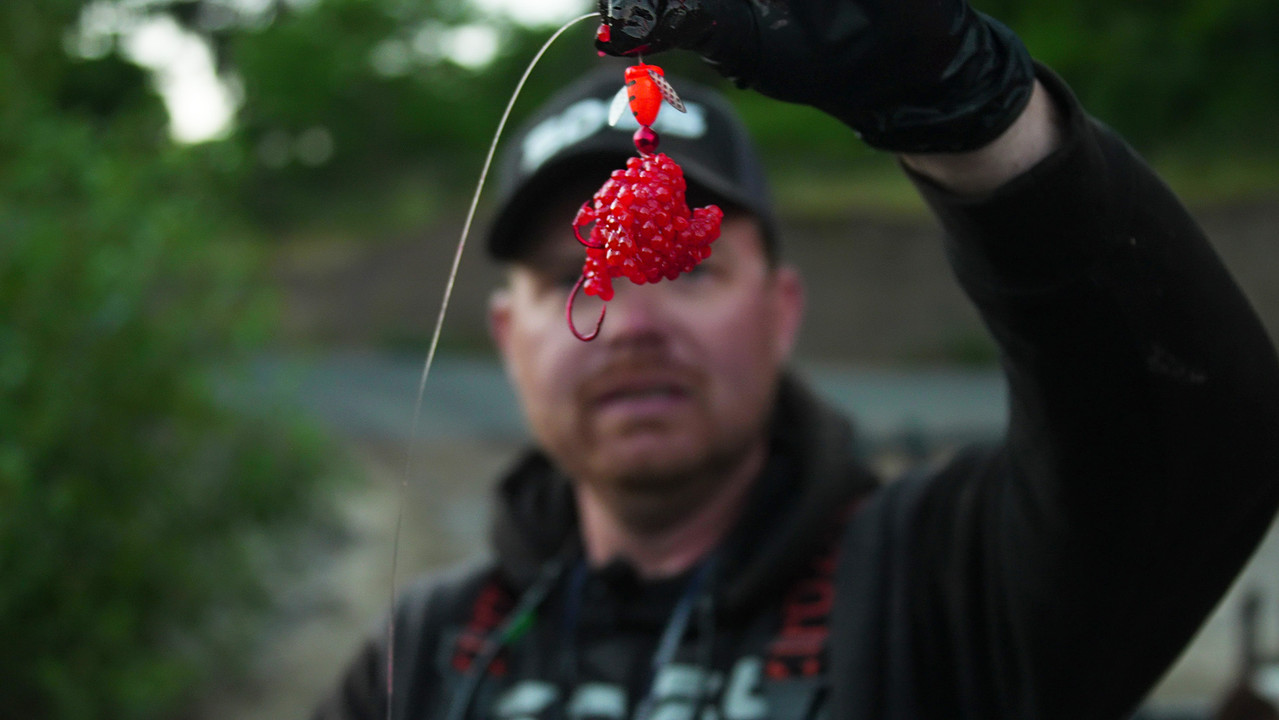Fall Salmon Back Bouncing
Salmon back bouncing, also known as back trolling, is a fishing technique primarily used for targeting salmon in rivers or streams. It is a popular method among anglers, especially in the Pacific Northwest.
Here's How Back Bouncing Works:
1. Boat Positioning: Anglers typically use a drift boat or a jet sled to navigate the river. The boat is positioned facing upstream, and the angler stands at the back or stern of the boat.
2. Anchoring: The boat is held in position using an anchor or motor, this allows the angler to fish a specific stretch of water without drifting downstream.
3. Rigging: A back bouncing setup usually involves a heavy-duty rod, and a level-wind reel or a weight-forward spinning or baitcasting reel with a line counter. The line is typically a monofilament or braided line with a test strength suitable for salmon fishing.
4. Bait Presentation: The bait used for back bouncing is often fresh or cured salmon eggs, with a plug or a lure. The bait is rigged with a sliding sinker or a pencil lead weight placed a few feet ahead of the bait. The weight allows the bait to stay near the riverbed as it drifts downstream.
5. Drifting and Bouncing: Once the rig is set up, the angler allows the boat to drift downstream while maintaining tension on the line. As the boat moves, the angler lifts the rod tip, then lowers it, creating an up-and-down motion with the bait. This bouncing action is intended to mimic the natural movement of a wounded or disoriented fish, attracting salmon to strike.
6. Hooking and Landing: When a salmon strikes the bait, the angler feels the bite through the rod tip or line. At this point, the angler sets the hook by quickly lifting the rod to drive the hook into the fish's mouth. Once hooked, the angler fights the fish and brings it to the boat for landing.
Back bouncing allows anglers to effectively cover a specific area of a river or stream, increasing the chances of attracting and hooking salmon. It requires skill and finesse to maintain the proper setup and detect subtle bites.
It is essential to check local fishing regulations and guidelines to ensure compliance and protect the fisheries.
Find All Our Salmon Tackle Here.
EXPLORE POPULAR ARTICLES
-
Crabbing in the Pacific Northwest
Nov 11th 2024Crabbing in the Pacific NorthwestThe Pacific Northwest (PNW) is a region known for its stunning land
-
Salmon Fishing in the Pacific Northwest: A Guide to the Best Angling Experience with Fish-Field
Nov 7th 2024The Pacific Northwest (PNW) is known for its stunning landscapes, rich natural resources, and, of co



